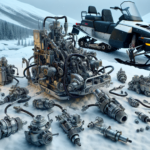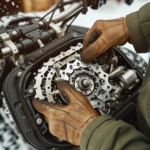Brrr, it’s cold outside, isn’t it? And it’s the perfect time to get your snowmobile out for a ride. But hang on a minute, have you ever wondered about the role of the choke in your snowmobile? You know, that small lever you tug on before kick-starting your ride? It’s quite crucial to the smooth operation of your vehicle, yet it often goes unnoticed. Let’s change that – let’s brave this chilly weather and take an informative journey to understand exactly what the choke does on your snowmobile.
Understanding the Mechanism of a Snowmobile
Basics of snowmobile functioning
First things first – let’s take a minute to understand how your snowmobile works. You might say, “Isn’t it just a regular combustion engine vehicle that slides on snow instead of rolling on wheels?” Well, you’re not entirely wrong, but there’s a bit more to it. A snowmobile, like any other vehicle, is powered by an engine. The engine fires up, combustion occurs, and that propels the snowmobile forward. However, there’s one little device in there that plays a major role, and that’s what we’re going to talk about today – the choke!
Differences from other combustion engine vehicles
Unlike other combustion engine vehicles such as your car or motorcycle, operating a snowmobile involves dealing with frigid temperatures. And when we say frigid, we mean really cold – the kind that can make your teeth chatter! In such temperatures, getting your engine to function optimally is a challenge. Here’s where our little device, the choke, steps in.
Purpose and Role of the Choke in a Snowmobile
Overview of choke’s role
Okay, so what does the choke do on a snowmobile? Here’s the answer – the choke is a device that aids in starting your engine when it’s cold. How does it do that? It restricts the flow of air to the carburetor, which in turn enriches the fuel-air mixture. This enriched mixture is essential for the engine to start and function smoothly when it’s cold.
Importance of choke in snowmobile operation
The importance of the choke in a snowmobile cannot be overstated. Without it, starting your snowmobile engine in cold temperatures would be a Herculean task. Not only that, the choke also ensures that your engine gets the right mix of air and fuel to run smoothly until it has warmed up enough to function without the choke’s assistance.
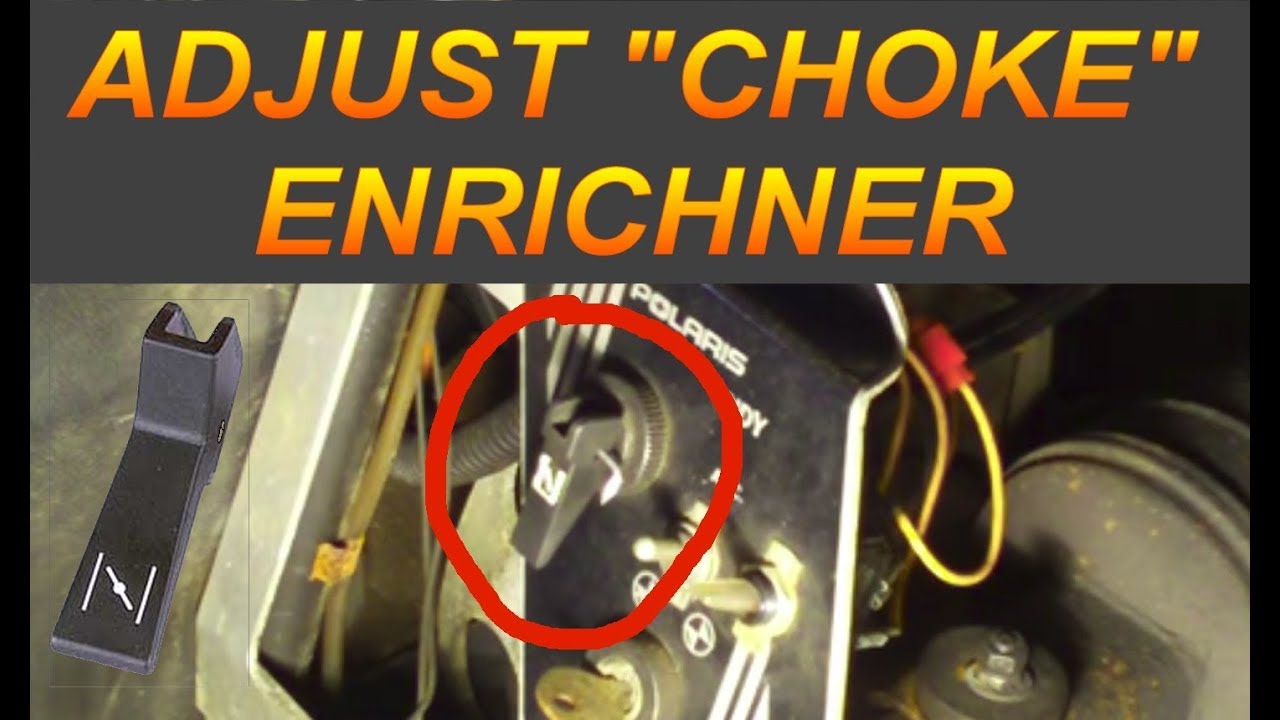
How a Choke Works in General
Understanding choke functionality in combustion engines
Now, you might be wondering, what’s so special about this device? Why can’t the engine just draw in air and fuel like it always does? The answer is, in normal temperatures, it can. But when it’s cold, the fuel doesn’t vaporize as easily. An engine needs vaporized fuel to ignite and start, and when it’s cold, this becomes a challenge. The choke steps in here, and by reducing the air intake, it enriches the fuel-air mixture, making it easier for the engine to ignite and start.
Interplay between choke, carburetor, and air/fuel mixture
The choke, the carburetor, and the air/fuel mixture – they all work together, like the perfectly synchronized parts of a well-oiled machine. The choke, by restricting the air intake, creates a rich fuel-air mixture. The carburetor, in turn, controls how much of this rich mixture goes into the engine. When it’s cold, more of this mixture is needed to keep the engine running, but once it’s warmed up, the choke can be released, and the carburetor delivers a normal, leaner mixture to the engine.
Applying the Choke Concept to Snowmobiles
Choke’s role in snowmobile engines
In a snowmobile engine, the choke plays an even more critical role than in other combustion engines because of the extreme cold conditions it operates in. A snowmobile engine has to start and run in temperatures where even the thought of combustion can send chills down one’s spine (pun intended!). The choke in a snowmobile ensures that the engine gets off to a warm, comfortable start, every time.
Interaction with other snowmobile components
The choke, while it is a small piece in the larger snowmobile machinery, has a crucial role in determining how well other components will perform. If the choke isn’t functioning properly, your engine might struggle to start or perform optimally, which affects all its connected parts. All in all, a properly functioning choke guarantees a smoothly running snowmobile engine.
Specifics of Choke Usage in Cold Temperature
Role of choke in cold start scenarios
In cold start scenarios, the choke is like your engine’s best friend. Imagine you’re starting a snowmobile on a bitterly cold morning. The fuel in your snowmobile’s tank is cold and unwilling to vaporize. Your engine, feeling just as lethargic from the cold, wouldn’t mind some extra help. The choke steps in here, increases the fuel content in the air-fuel mixture, and voila! Your engine sputters to life.
Why snowmobile chokes are particularly important
Snowmobile chokes are particularly important because they handle situations that many other vehicle chokes don’t have to. Extreme cold conditions can push engines and their components to their limits, and the choke in a snowmobile helps the engine tackle these situations easily and efficiently.
Steps to Operate Choke on a Snowmobile
Location and identification of the choke
Getting down to the brass tacks – how do you locate and identify the choke on a snowmobile? It’s usually a lever or a switch located on the handlebars or near the engine, possibly marked as ‘choke’ or ‘start’. In some models, it could be a knob that you can pull out or push in. When in doubt, your snowmobile’s manual is your best guide.
Procedure for engaging the choke
Once you’ve found the choke, how do you engage it? That’s easy – if it’s a lever or switch, you move it to the ‘choke’ or ‘start’ position. If it’s a knob, you pull it out. Your snowmobile’s manual will have clear instructions on this. Remember, the choke should only be engaged when starting a cold engine. Once the engine’s warmed up, the choke should be disengaged to allow the engine to function normally.
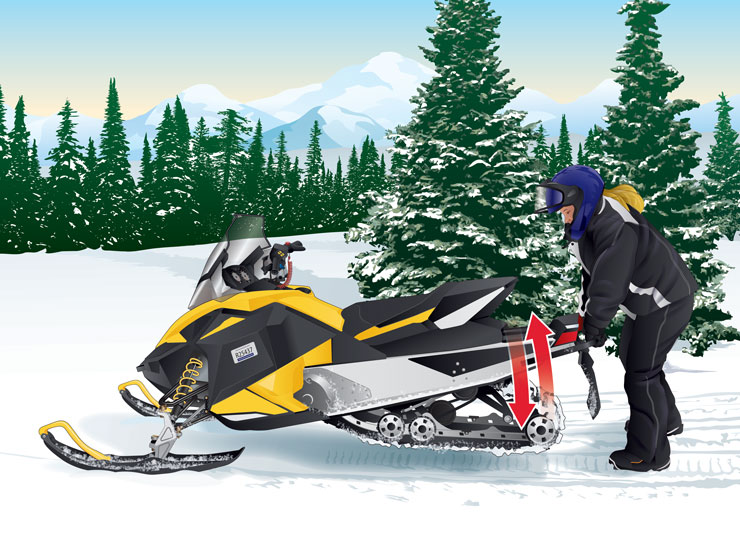
Identifying Choke Related Problems
Indicators of choke issues in a snowmobile
Just as your body gives you signals when you’re not feeling well, your snowmobile will also give you hints if the choke isn’t working properly. If your engine struggles to start, if it sputters and shuts off soon after starting, or if it doesn’t run smoothly despite a warm engine, you might want to check your choke.
How to troubleshoot common choke problems
Some common choke problems and how to fix them are – if the engine doesn’t run smoothly after it’s warmed up, try disengaging the choke. If the engine won’t start or keep running in cold conditions, try engaging the choke. If none of these work, you might need professional help as the problem could be more complex.
Frequently Asked Questions About Snowmobile Chokes
Common queries about choke operations
There’s understandably a lot of curiosity around choke operations. How long should the choke be engaged? How do I know when to disengage it? Is it okay to run the engine with the choke engaged? We’ve got you covered, and the answers to these, believe it or not, are quite simple. The choke should generally be engaged only until the engine warms up, which is usually a few minutes after starting. You then disengage the choke for regular operation. And no, it’s not advisable to run the engine with the choke always engaged, as it can lead to inefficiencies and even engine damage over the long term.
There are also a few misconceptions about the choke that we’d like to dispel. One, engaging the choke doesn’t mean you’re choking the engine – on the contrary, you’re helping it! Two, it’s not necessary (or advisable) to keep the choke engaged all the time. Three, while the choke plays a critical role in a snowmobile, it’s not a fix for all engine problems. If your engine isn’t running smoothly despite a properly functioning choke, the problem could lie elsewhere.
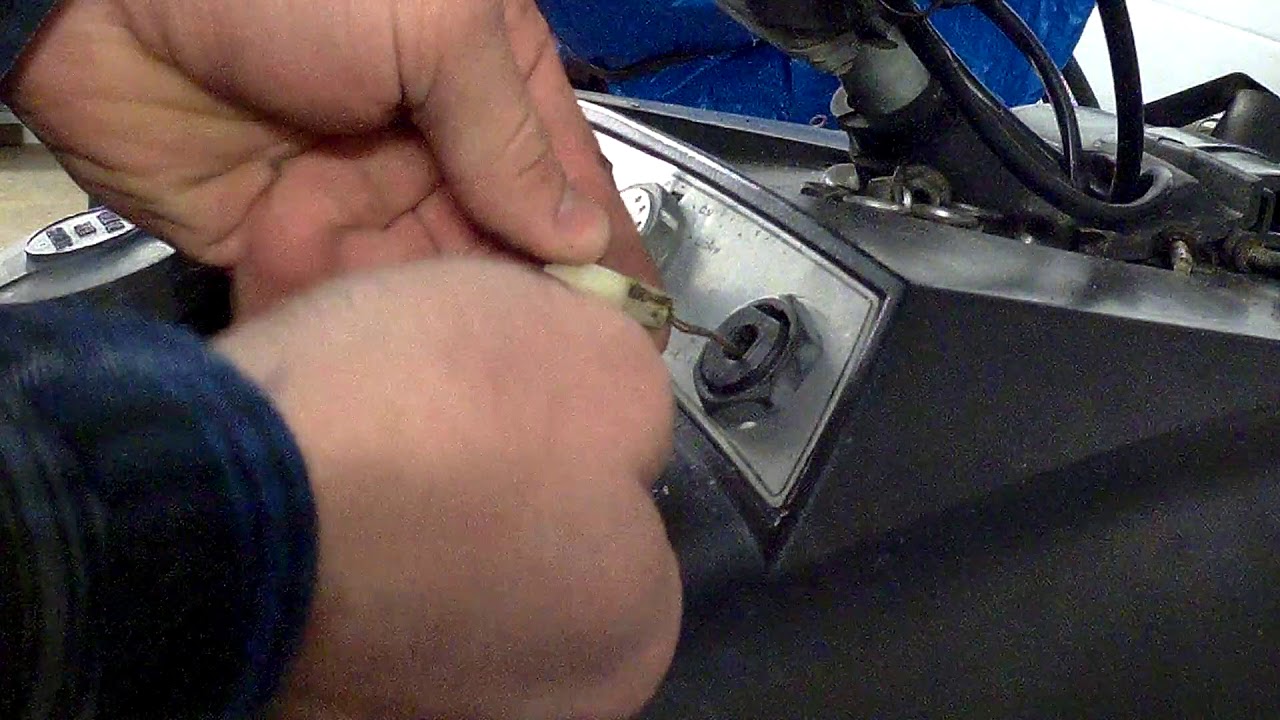
Maintainance Tips for Choke in a Snowmobile
Routine check-ups for the choke
A routine check-up can go a long way in ensuring a long and healthy life for your snowmobile choke. Look for signs like a loose lever or knob, or any damage to the choke cable. Ensure that the choke engages and disengages smoothly, and that it does its job of enriching the fuel-air mixture correctly.
Professional services and DIY tips for maintaining choke
While some maintenance tasks can be handled by you, others might need a professional’s touch. Things like cleaning the choke, lubricating the choke cable, or adjusting the choke settings can be DIY projects. But if you need to repair or replace the choke, or if there are complex issues involved, it might be best to take your snowmobile to a professional.
Safety Guidelines While Dealing with Snowmobile Choke
Basic safety rules
Even though the choke is a small and relatively simple device, never forget your basic safety rules while handling it. Always turn off the engine before doing any work on the choke, and make sure the engine and the choke are cooled down. Wear safety gear like gloves and eyewear to protect yourself.
Do’s and don’ts while handling the choke
A few do’s and don’ts while handling the choke – do maintain it regularly, do consult your snowmobile’s manual for specific instructions, do get professional help if needed. Don’t force the choke lever or knob if it’s stuck, don’t keep the choke engaged for longer than necessary, and most importantly, don’t ignore any signs that your choke might not be functioning properly.
Remember that a well-maintained choke can ensure a hassle-free experience with your snowmobile. So take good care of it, and happy snowmobiling!
- What Snowboard Bindings Should I Get? - January 23, 2024
- What Size Screws For Snowboard Bindings? - January 23, 2024
- How To Snowmobile On Water? - January 23, 2024


